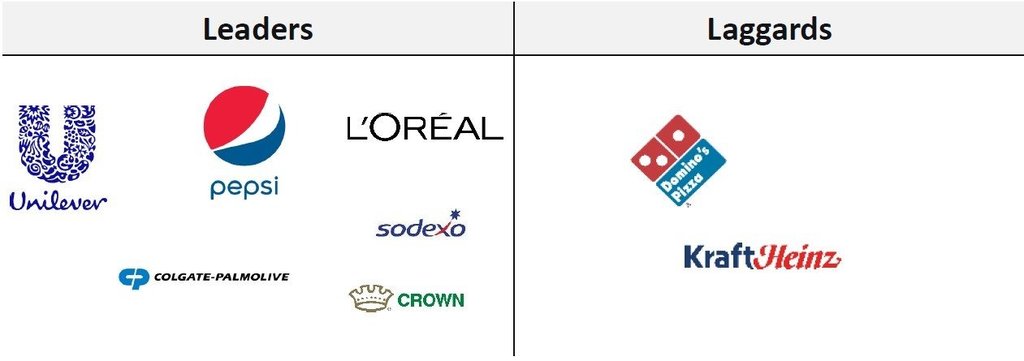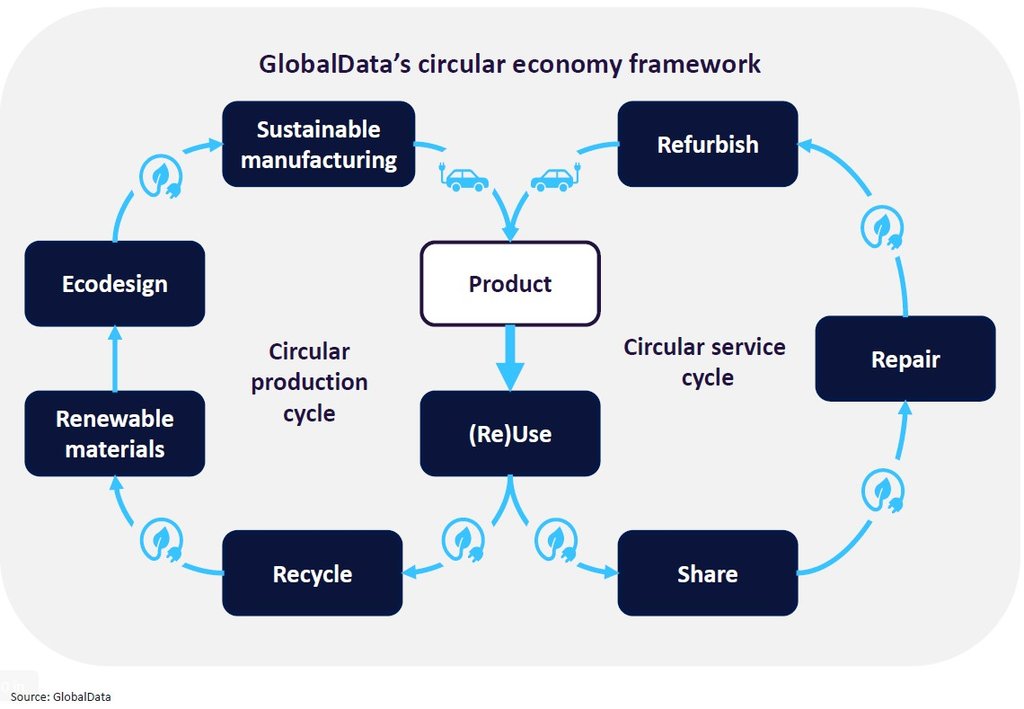Consumer industries are far from net zero. Companies achieve net zero emissions by cutting greenhouse gas (GHG) emissions to as close to zero as possible, with any remaining emissions then “offset”. All 20 selected consumer goods, foodservice, and packaging companies (consumer industries) analyzed by GlobalData have announced at least a target for their emissions.
Emissions generated by business operations, known as Scope 1 and 2 emissions, make up only 12% of emissions in the consumer sector. The main contributors to these emissions include fuel combustion, such as boiler emissions and on-site generators; industrial processes, such as chemical manufacturing; fugitive emissions from methane and refrigerant leaks; and electricity use.
Most emissions in consumer industries are value chain emissions, known as Scope 3. Most of these arise from the production of purchased goods and services and the end-of-life treatment of these products. Scope 3 emissions are the most difficult emissions to measure and reduce. In 2022, Score 3 emissions were reported by 18 of the 20 companies studied for our report.
Consumer companies have made significant investments in renewable energy. This includes investments in solar and wind energy and on-site solar projects. These investments have helped reduce Scope 1 and 2 emissions, and many consumer companies are on their way to achieving ambitious renewable energy targets.
Value chain emissions pose significant challenges. A large portion of Scope 3 emissions are from the end-of-life treatment of sold products and from purchased goods and services. To reduce value chain emissions, consumer industries must continue developing circular economy-based production models. An increased regulatory focus on non-CO2 emissions, such as methane, means that emissions from agriculture are also becoming a more urgent issue.
This means renewable energy, regenerative agriculture and the circular economy are key net zero strategies for consumer industries.
Who is winning the race to net zero?
Most power leaders have set net zero targets, but few include Scope 3 emissions. GlobalData has analyzed the targets, emissions data, and net zero strategies of 20 leading power companies.

GlobalData has analyzed the targets, emissions data, and net zero strategies of 20 leading consumer companies. These companies have generally provided granular emissions data and had detailed net-zero strategies. The leaders below were selected based on the level of implementation of their strategy.

Unilever is considered a leader because of its long-standing research and development into sustainable products. This is despite recent signals that it may place less emphasis on sustainability in the future.
Domino’s and KraftHeinz were selected as laggards due to their exposure to agriculture emissions and a lack of investment in sustainable agricultural practices compared to their peers.
Are consumer companies reducing their emissions?
Most companies in consumer industries have started reducing Scope 1 and 2 emissions. Yum! Brands has decreased its Scope 1 and 2 emissions the most over the last five years, followed by L’Oreal. Berry Global had the biggest increase in emissions between 2017 and 2022, while Estee Lauder had the highest increase in emissions in 2021-2022.
Total operational emissions gradually increased between 2017 and 2020, with a spike during the pandemic-hit year of 2020, before slowly decreasing yearly thereafter.
Five of the 20 companies we analysed reported Scope 3 emissions for all six years between 2017 and 2022: Coca-Cola, L’Oreal, Nestle, Sodexo, and Yum! Brands. The five companies with the largest Scope 3 emissions are Nestle, Procter & Gamble, and Unilever.
Scope 3 emissions account for the largest portion of consumer industries’ carbon emissions due to the number of upstream and downstream business activities and suppliers involved in the value chain for each product. To decrease Scope 3 emissions, consumer goods, foodservice, and packaging companies must discuss potential collaboration options with suppliers and increase the transparency of their supply chains.
Scope 1 and 2 emission reduction strategies
Scope 1 and 2 emissions are produced directly by companies in their operations and indirectly through the generation of purchased energy. For consumer industries, Scope 1 and 2 emissions account for around 12% of total emissions, and many consumer companies have set reduction targets for these types of emissions. Consumer industries are reducing Scope 1 and 2 emissions through two key strategies:
Renewable energy strategies
Most consumer companies are committed to using renewable energy. Consumer companies’ renewable energy targets are focused on supporting their own operations and facilities with renewable sources by their target year.
Strategies include the use of onsite renewables such as solar installations on company-owned premises; use of power purchasing agreements and energy attribution certificates; and sourcing energy from green energy retailers who provide energy through their own generation sites.
Several consumer companies are part of RE100, a campaign led by The Climate Group with a goal of 100% renewable electricity by 2050. Unilever achieved 100% renewable electricity in its own operations in 2020; in the same year, Estee Lauder achieved its target of 100% renewable electricity. In 2021, Mondelez achieved 100% renewable electricity across all its UK sites.
Energy efficiency strategies
The largest site-level energy consumers for the retail industry are heating, lighting, and refrigeration. Retailers can undertake simple actions to contribute to decarbonizing their physical sites, including stores, warehouses, and offices.
Examples include installing energy management systems for real-time monitoring and optimisation of energy use; replacing or fitting efficient heating, ventilation, and air conditioning systems; improving the energy efficiency of refrigeration systems; and LED retrofitting.
Scope 3 emission reduction strategies
For Scope 3 emissions, consumer industries are focused on adopting the circular economy alongside increasing the use of sustainable materials in the circular production cycle.
It is critical for consumer goods, foodservice, and packaging companies to work closely with partners to map end-to-end supply chains and identify emissions sources. This includes growing, production, manufacturing, and logistics processes.
The circular economy is a fundamentally different approach to how products are designed, produced, and used, in which economic progress is decoupled from the consumption of Earth's finite resources. Achieving these goals will minimize the waste produced by the production and consumption of products.

GlobalData, the leading provider of industry intelligence, provided the underlying data, research, and analysis used to produce this article.
GlobalData’s Thematic Intelligence uses proprietary data, research, and analysis to provide a forward-looking perspective on the key themes that will shape the future of the world’s largest industries and the organisations within them.